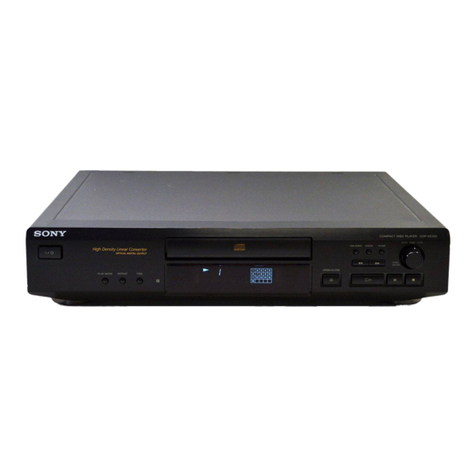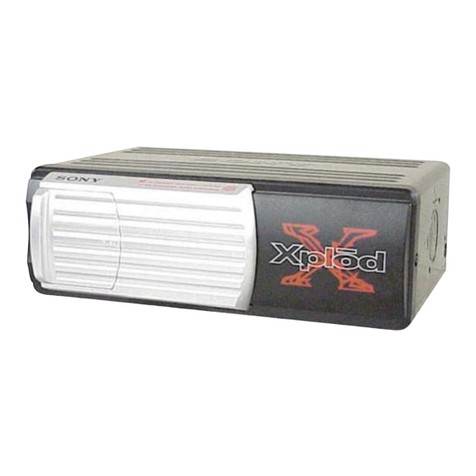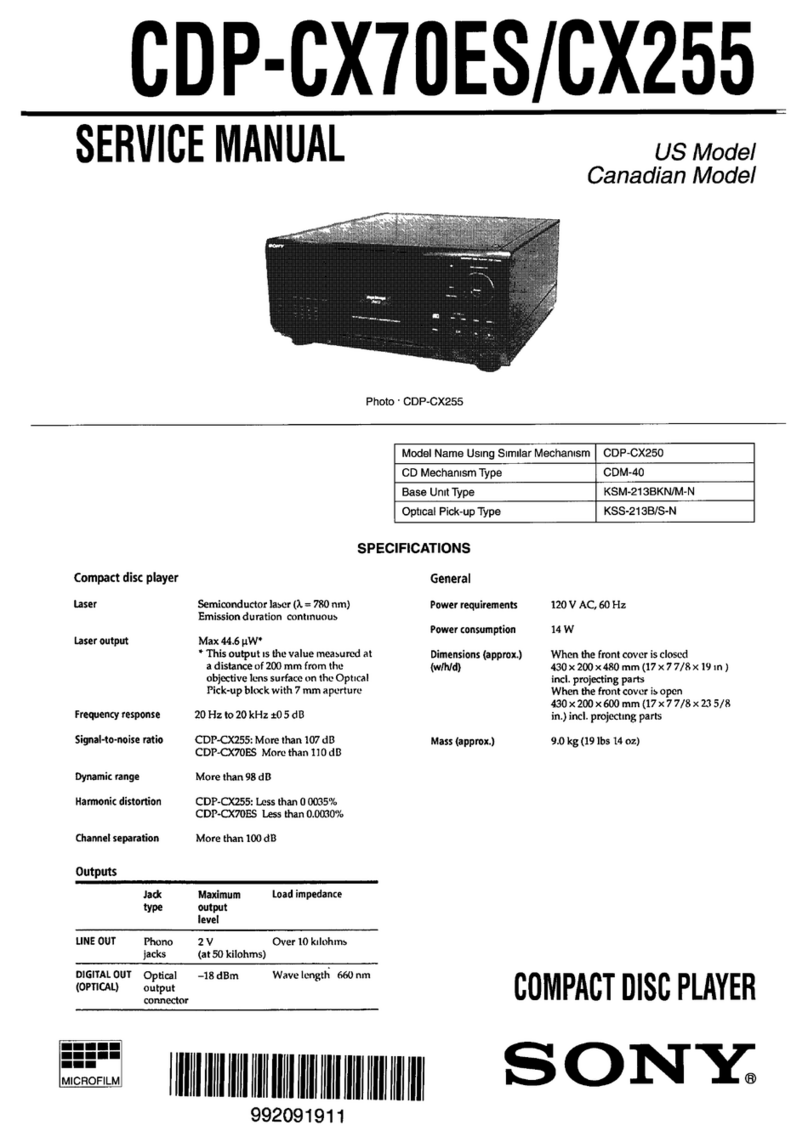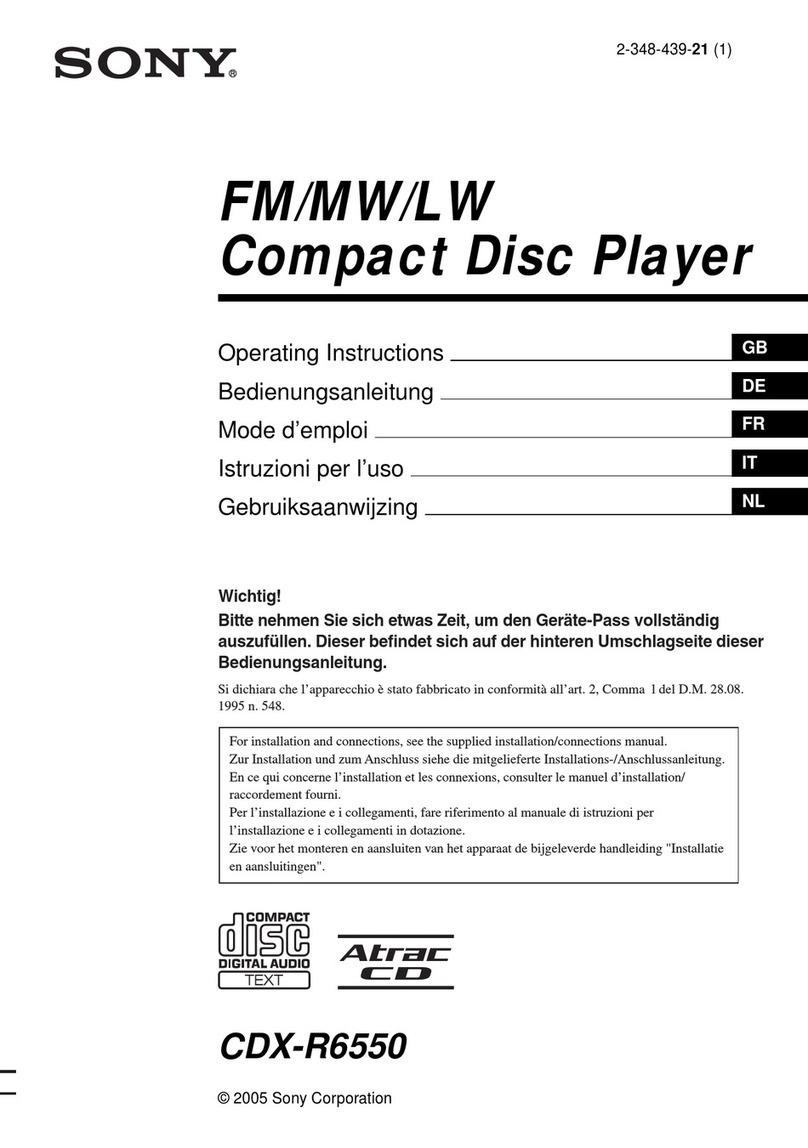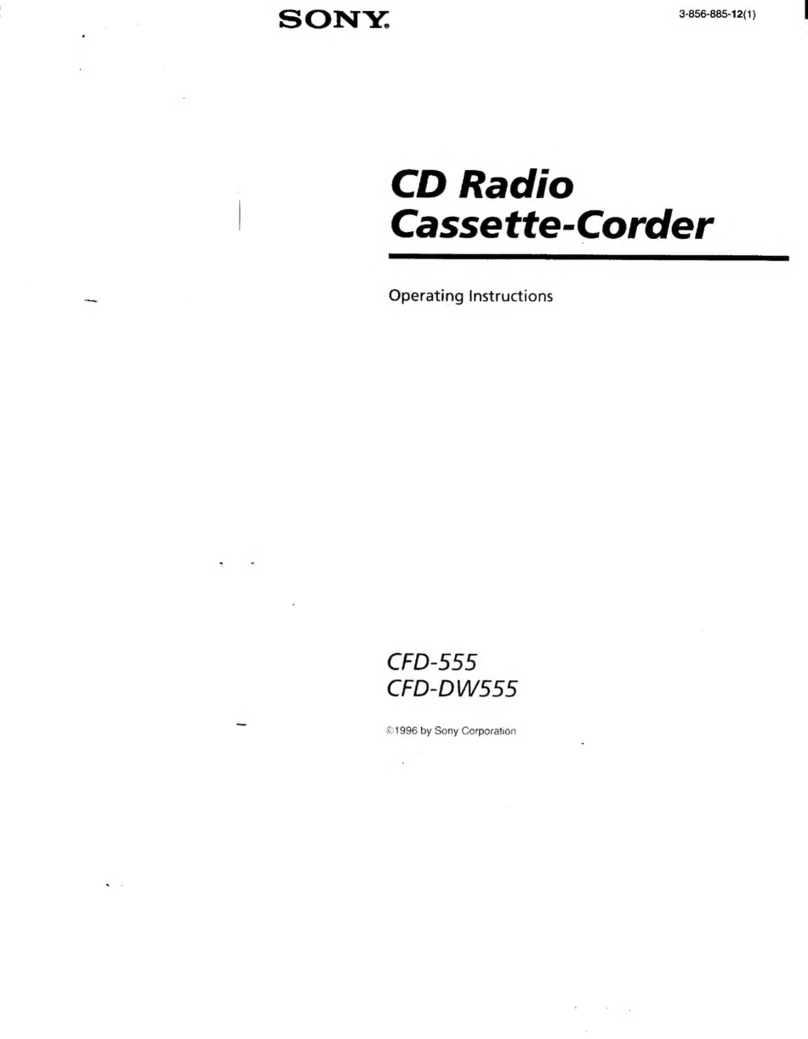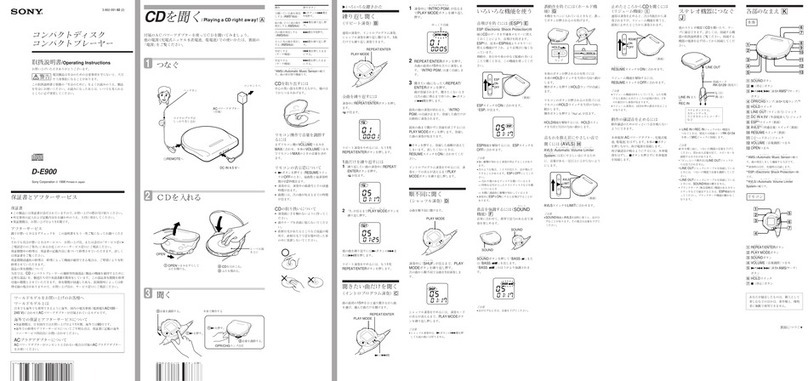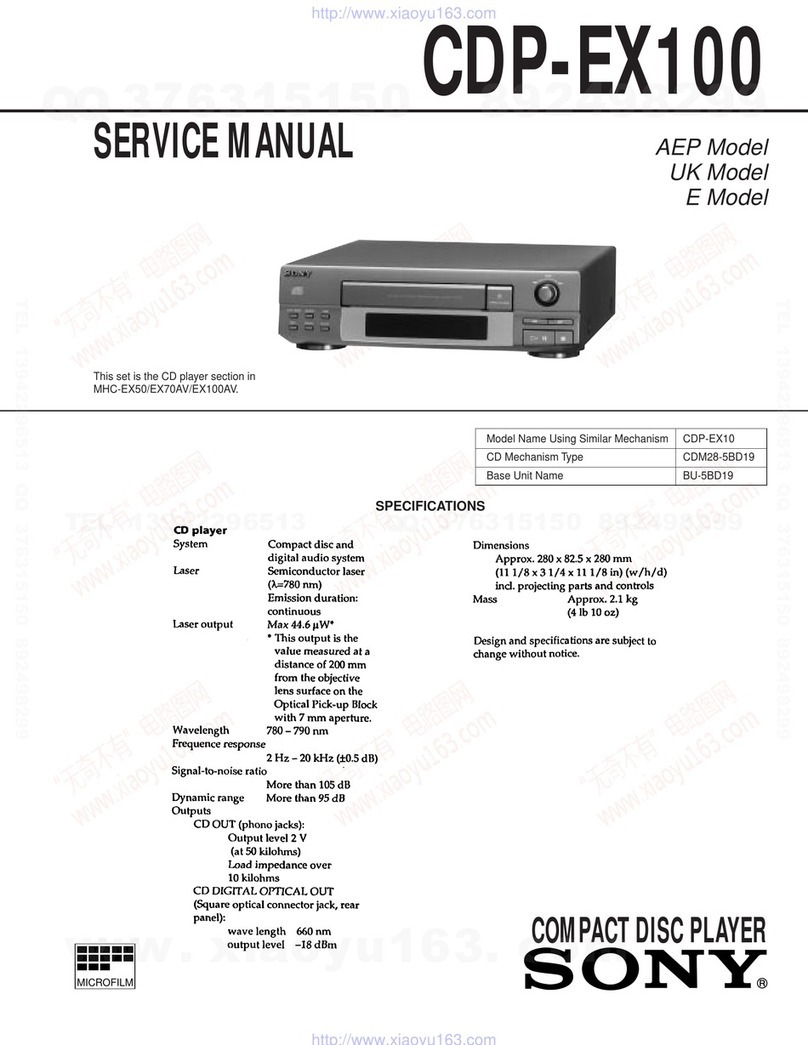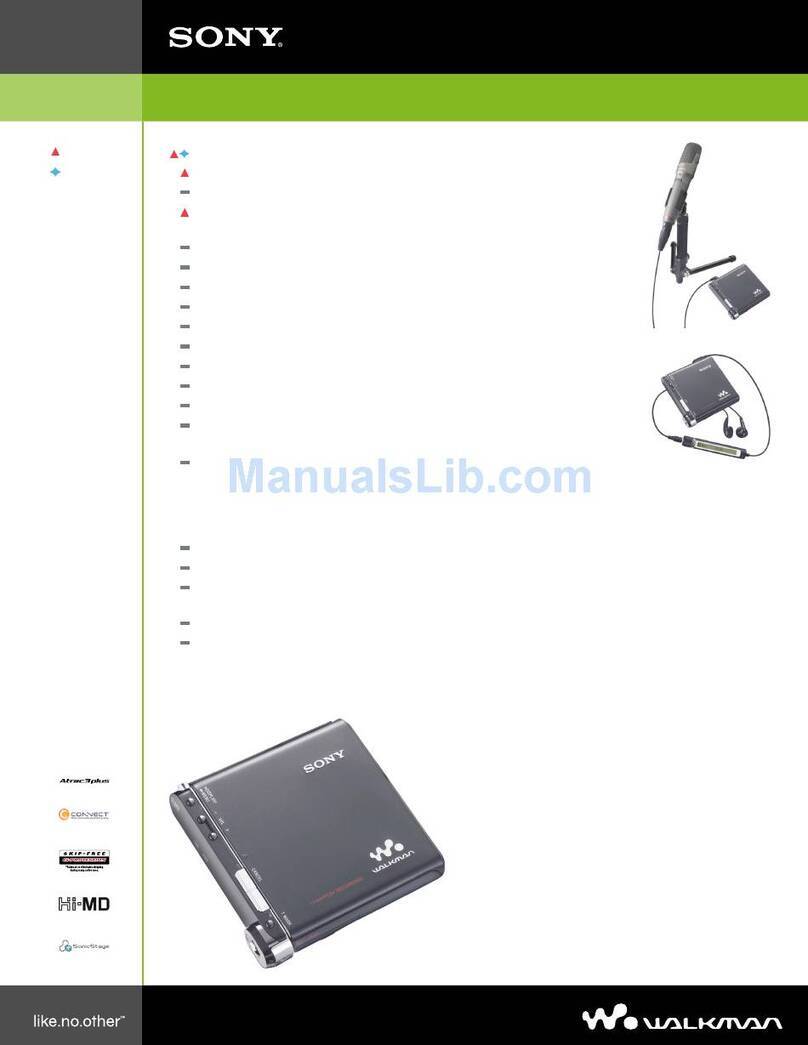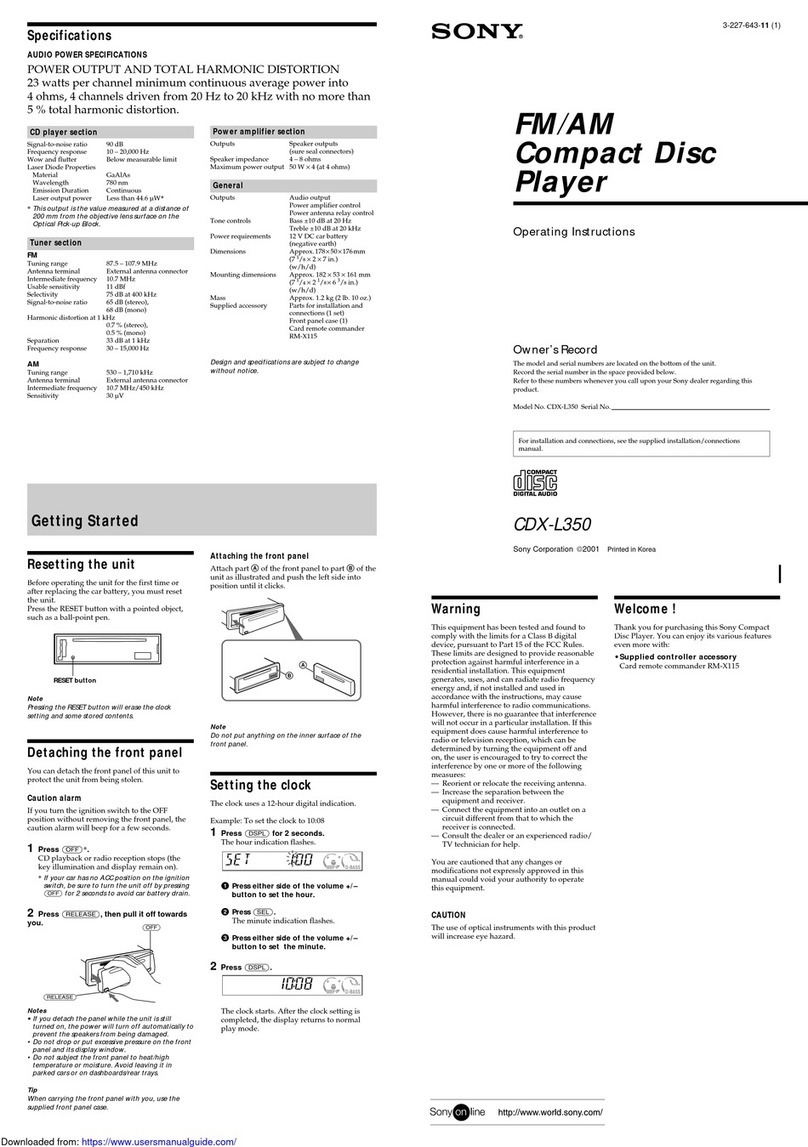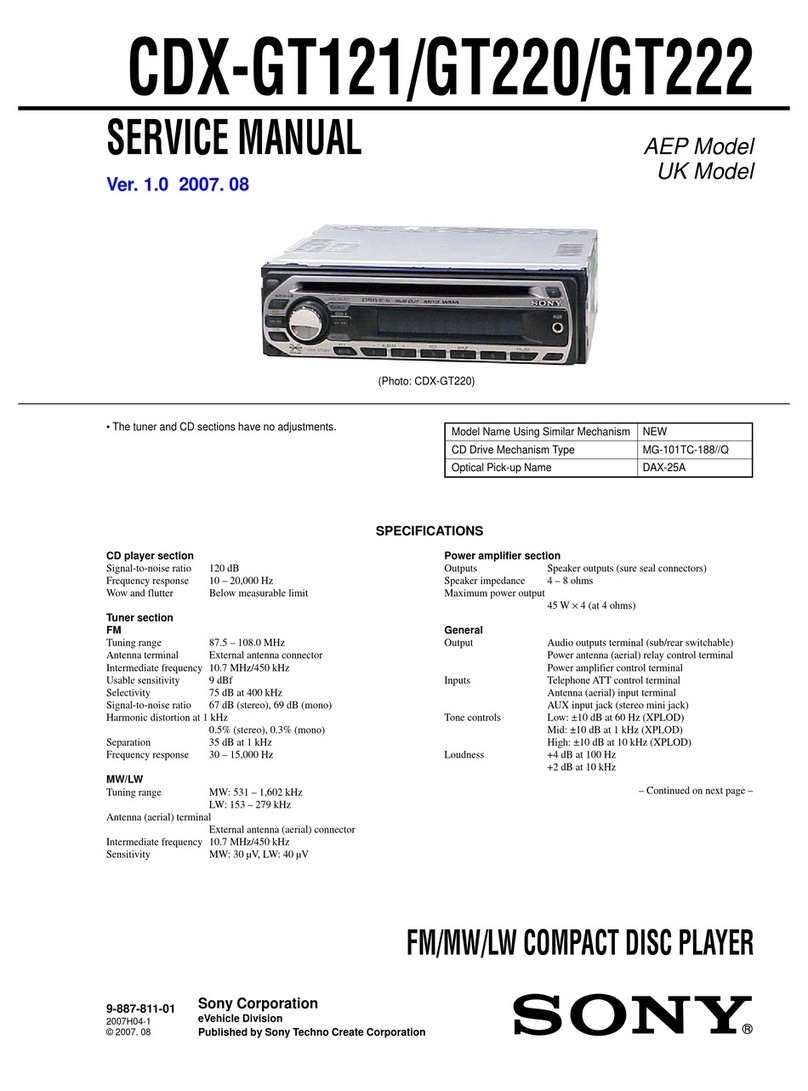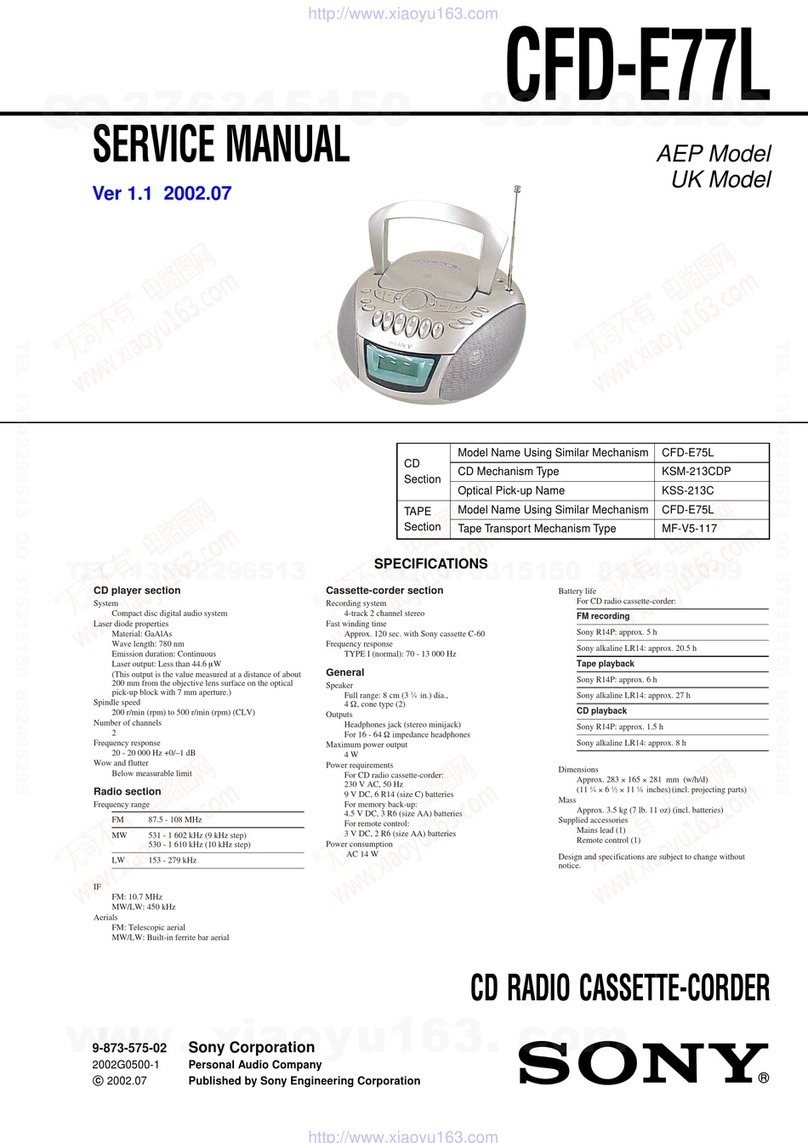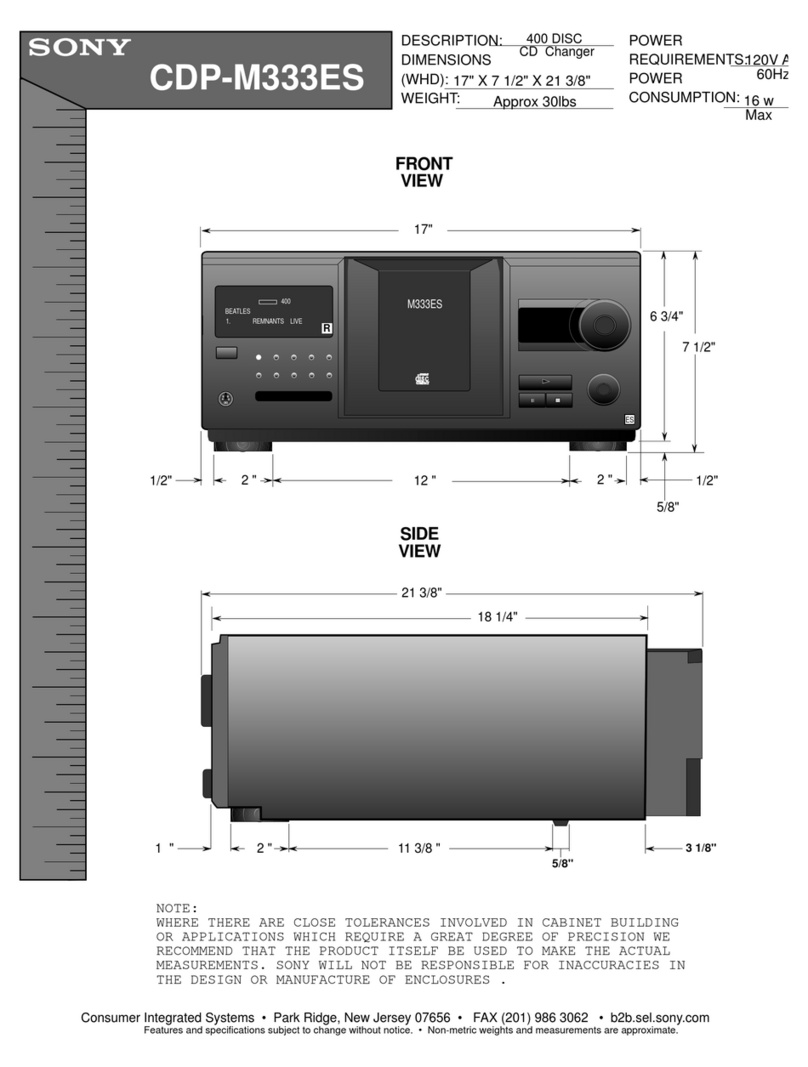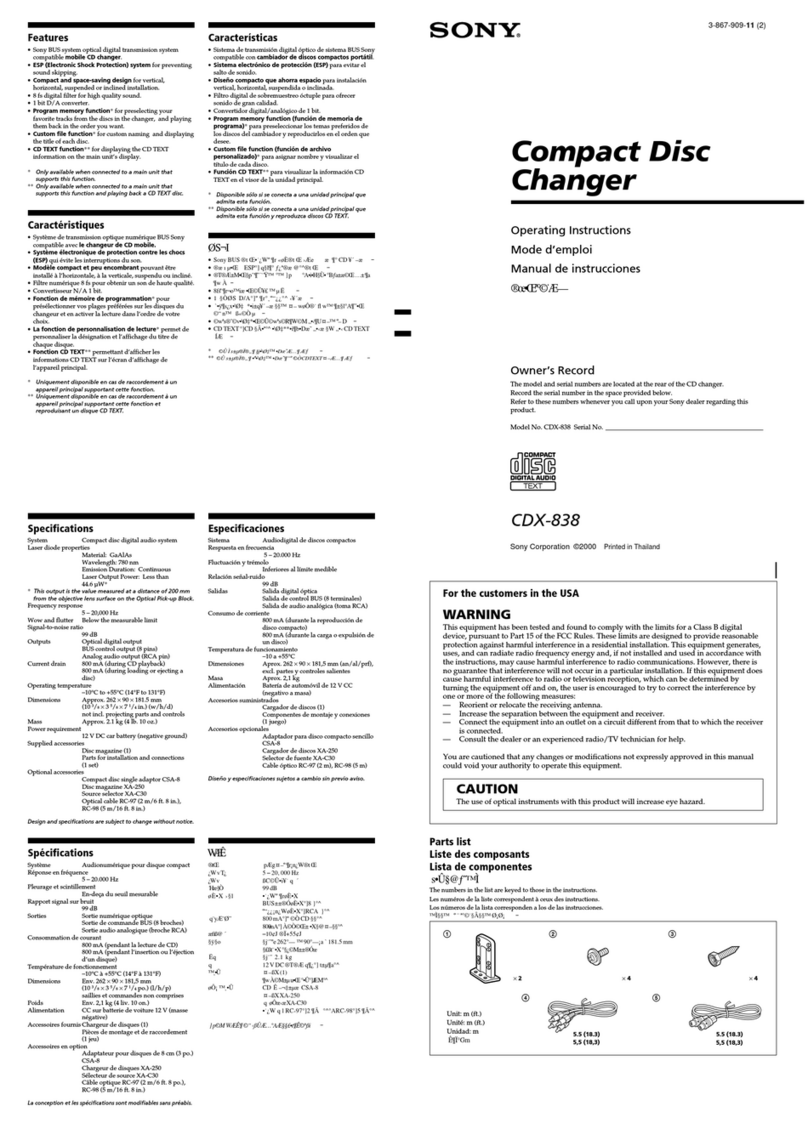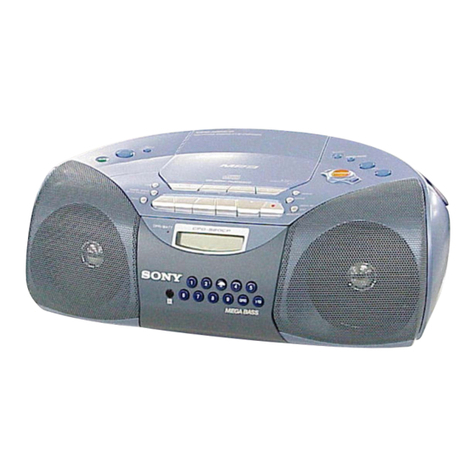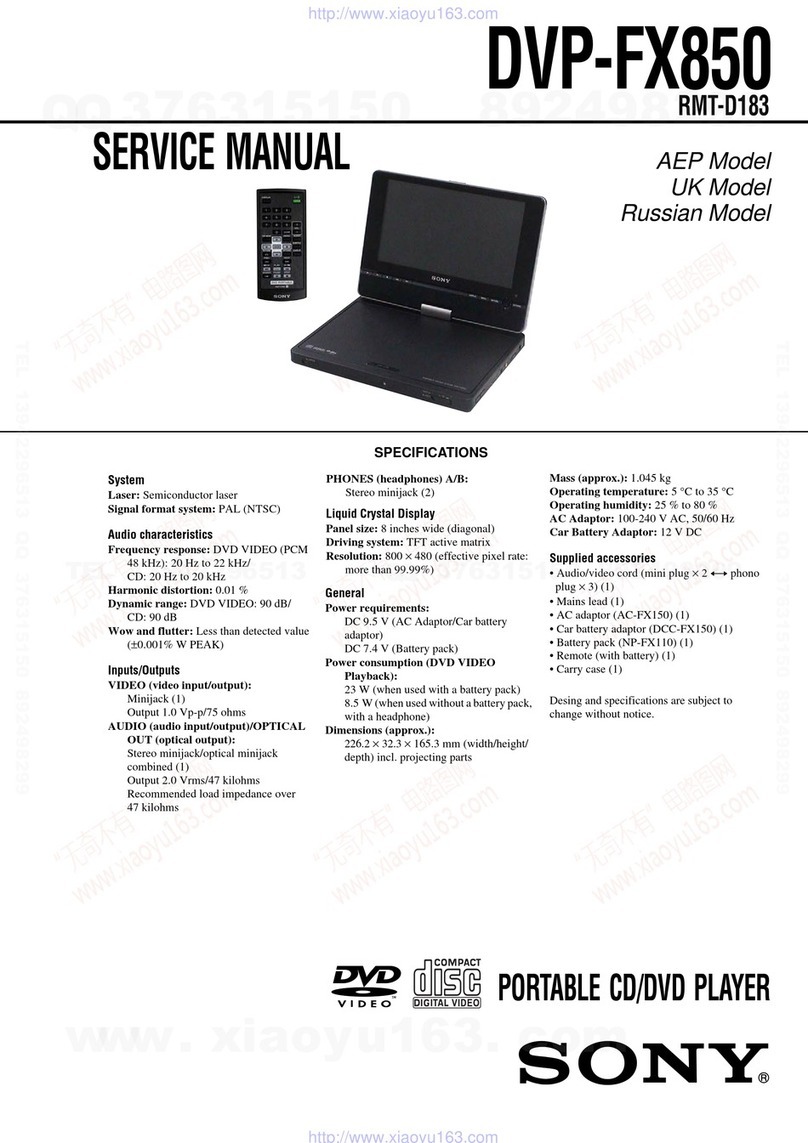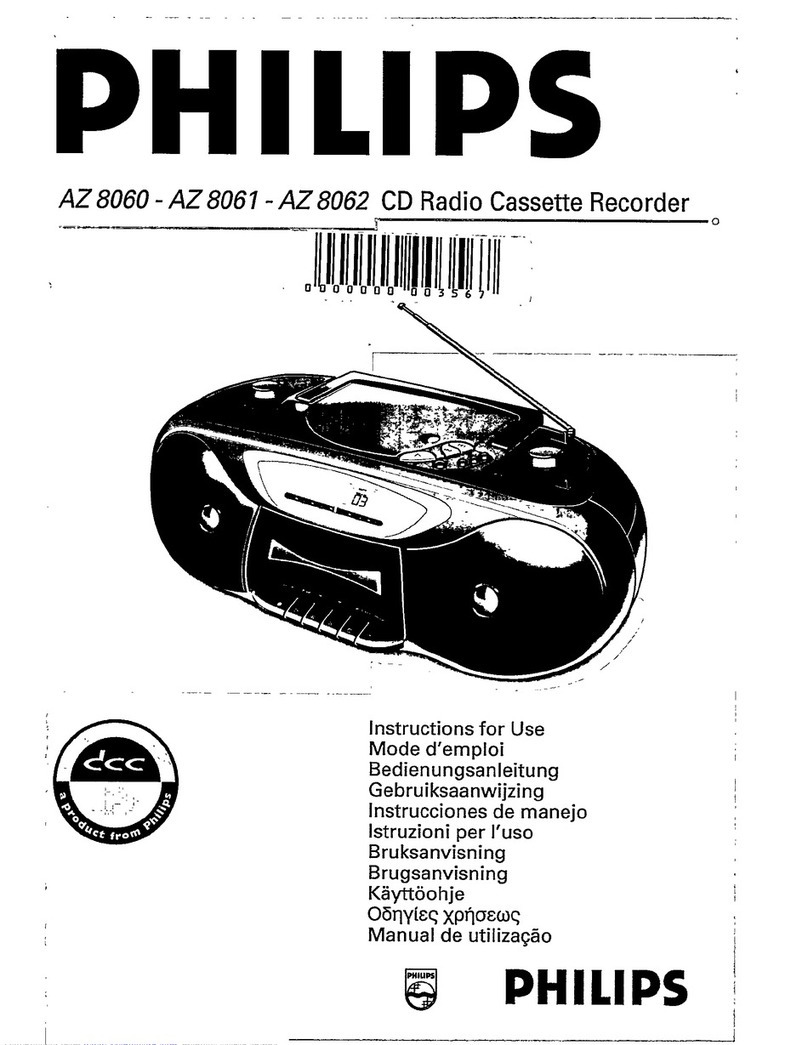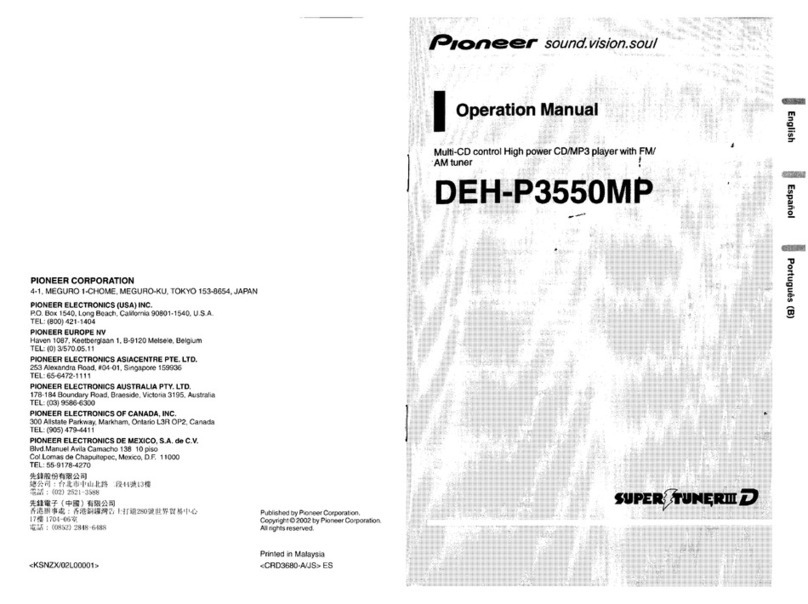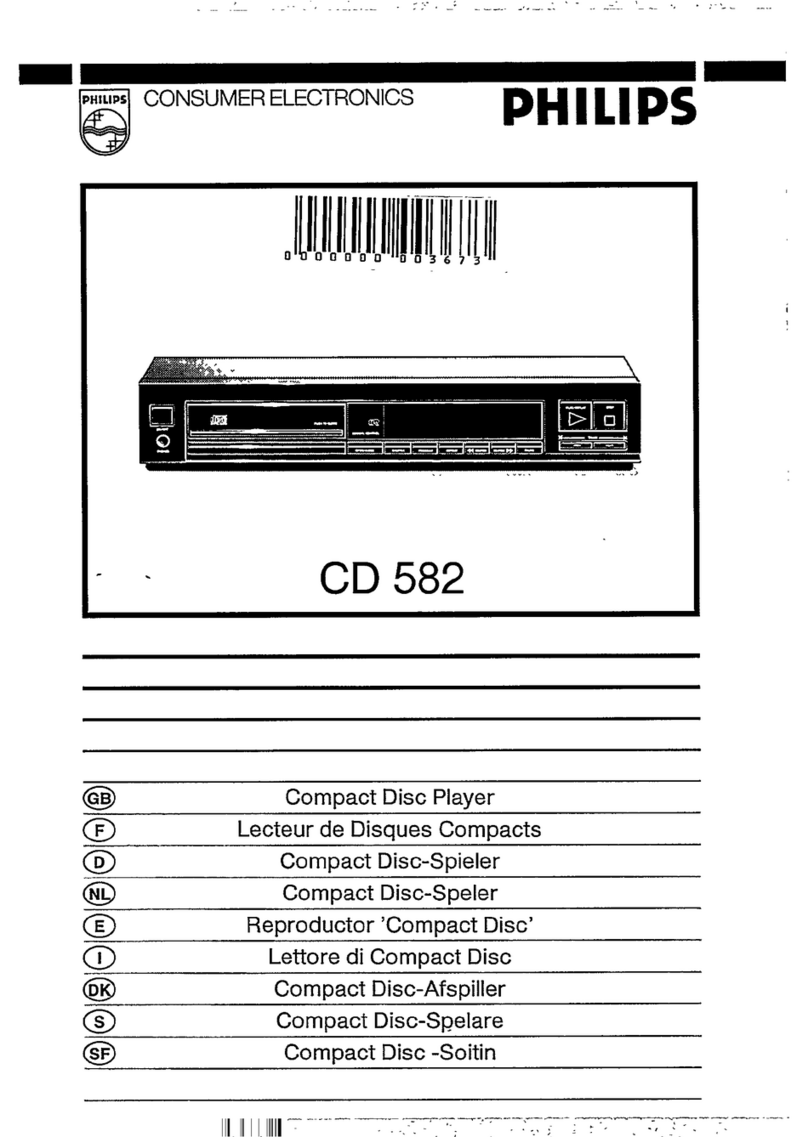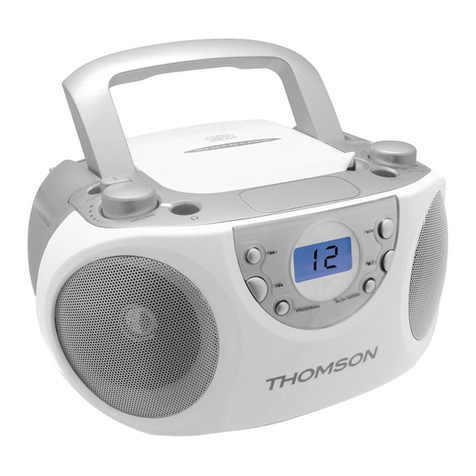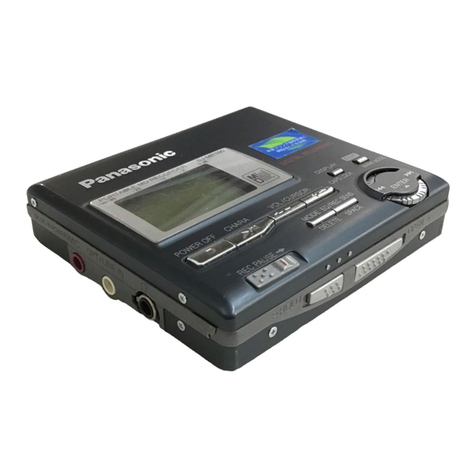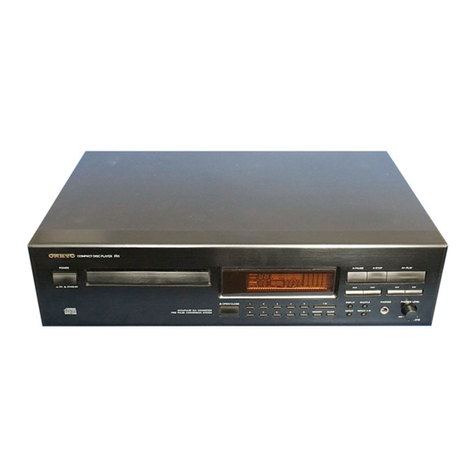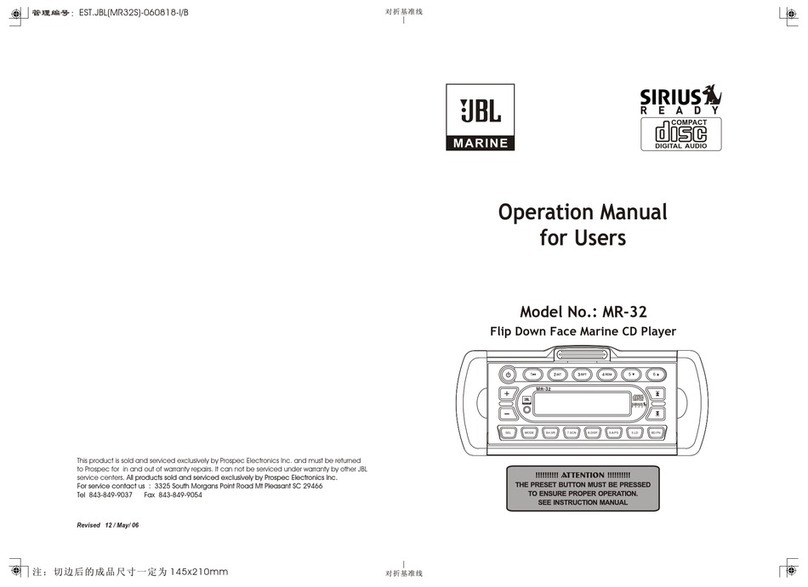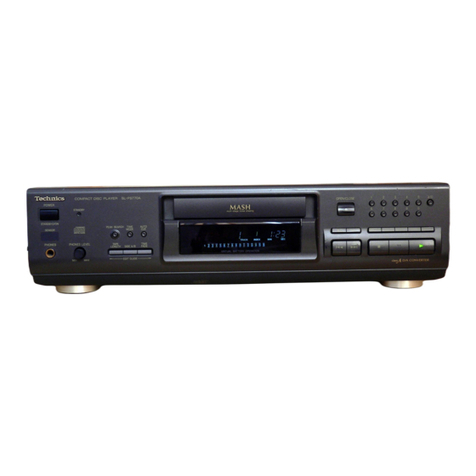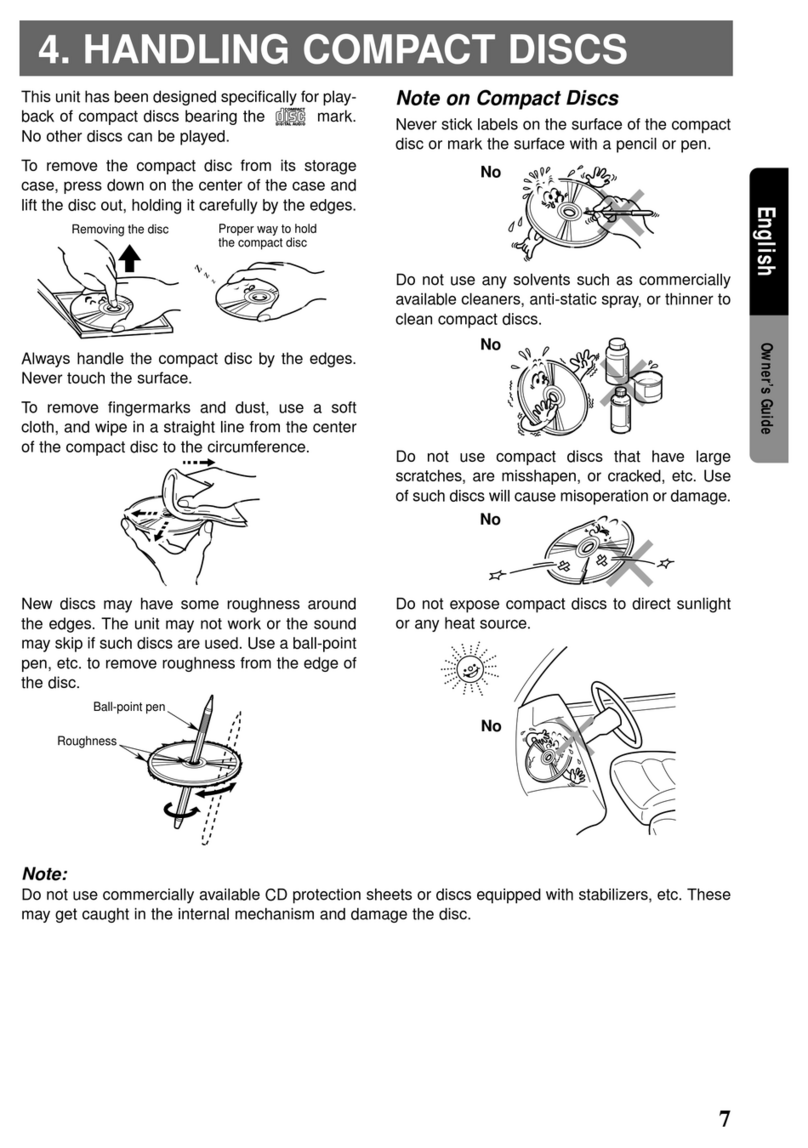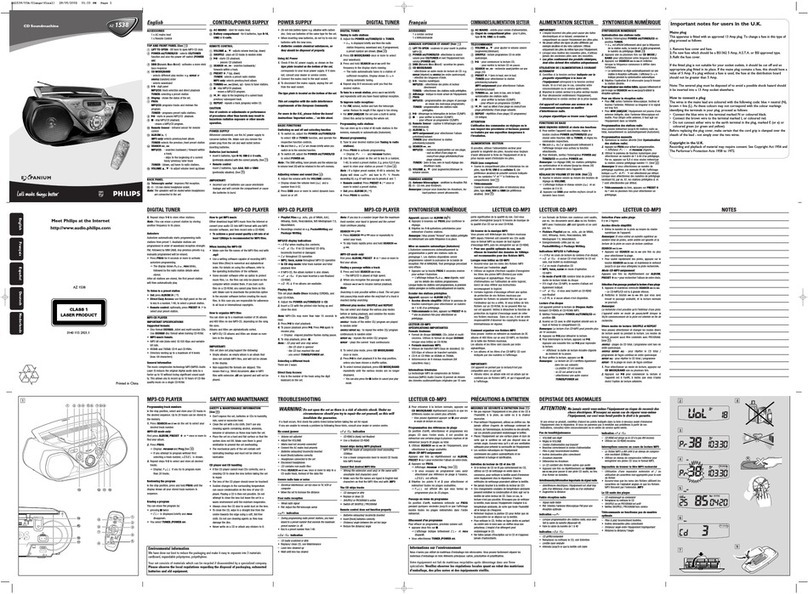– 7 – – 8 – – 9 –
Pin No. Pin Name I/O Pin Description
63 SEG1 — LCD drive segment output (Open)
64 SEG0 O LCD drive segment output
65 – 68 COM3 – 0 O LCD drive common output
69 – 71 V3 – 1 O LCD drive bias output
72, 73 C1, 0 O Capacitor connected terminal of LCD driver for voltage-up.
74 STOP O Stop signal output to VCD control IC. (Connect to ground.)
75 TEST I Test terminal for IC. Fixed at L.
76 XHPSW O — Not used (Open)
77 XLIGHT O — Not used (Open)
78 RESET I I System reset signal input from power control IC (IC401). (L: Reset)
79 XIN I Oscillation input
80 XOUT O Oscillation output (Open)
5-1. IC PIN DESCRIPTION
• IC801 TMP88CM22F (SYSTEM CONTROLLER)
Pin No. Pin Name I/O Pin Description
1 VSS I Ground
2 RESERVE — Not used (Open)
3 FOK I I Focus OK signal input from digital servo processor (IC601).
4 AGCPWM O O AGC control pulse output
5, 6 RESERVE — Not used (Open)
7 AMUTE O O Analog audio muting ON/OFF signal control signal output (H: Mute ON)
8 RESERVE — Not used (Open)
9 XRST O O Reset signal output to CXD3027R (IC601). (L: Reset)
10 SCK O O Serial data transfer clock signal output to CXD3027R (IC601).
11 MSDT I (SENS) I Serial data input from CXD3027R (IC601).
12 MSDT O O Serial data output to CXD3027R (IC601).
13 WAKEUP O O WAKE-UPcontrol signal output (for system standby reset)
14 AD SEL I Plug-in detection signal input of LINE OUT/OPTICAL OUT jack.
15 AD CHGMNT I Battery charge voltage detection input from power control IC (IC401).
16 RESERVE — Fixed at H.
17 AD BATMNT I Battery voltage detection input
18 AD KEY1 I Key input from switch unit (A/D input)
19 RESERVE — Fixed at H.
20 AD DCINMNT I DC input voltage detection input (A/D input) DC input jack use/no-use detect input
21 WP OPEN I CD door open/close detection input
22 VREFL I Reference voltage (0 V) input for A/D converter.
23 VREFH I Reference voltage (+2 V) input for A/D converter.
24 VDD — Power supply pin (+2 V)
25 SCOR I I Sub code sync detection input from CXD3027R (IC601).
26 GRSCOR I I GRSCOR signal input
27 FG I I FG pulse input
28 BEEP O O Beep sound output to headphone AMP(IC302).
29 – 32 RESERVE — Not used (Open)
33 COMPRESSION I Key input from EPS switch (S804).
34 27/37 — Not used (Open)
35 WFCKI I WFCK input
36 XWRE — Not used (Open)
37 XQOK — Not used (Open)
38 DBB I I MEGA BASS switch (S802) input (L: OFF, H: ON)
39 HOLD I I HOLD switch (S803) input (L: HOLD on, H: HOLD off)
40, 41 RESERVE — Not used (Open)
42 XHGON — Not used (Open)
43 XLAT O O Serial data latch pulse output to D-RAM controller (IC601). (for ESP)
44 XSOE O O Output enable signal output (for ESP)
45 VOLUME IC LATCH O O Not used (Fixed at H)
46 XPOWLT O O Latch output to VCD control IC (IC401).
47 RESERVE — Not used (Open)
48 XAPC OFF O O APC mute signal output (L: mute)
49 SEG15 — Not used. (Open)
50 – 62 SEG14 – 2 O LCD drive segment output
SECTION 5
DIAGRAMS
TP652
– MAIN BOARD – (SIDE A)
S805
VOL
S804
TP629
–MAIN BOARD –(SIDE B)
SECTION 4
ELECTRICAL ADJUSTMENTS
CD section adjustments are done automatically in this set.
In case of operation check, confirm that focus bias.
4-1. FOCUS BIAS CHECK
1. Connect the oscilloscope between TP629 (RF) or TP652 (RF)
and GND on main board.
2. Insert the disc (YEDS-18). (Part No. : 3-702-101-01)
3. Press the N>button.
4. Confirm that the oscilloscope waveform is as shown in the
figure below. (eye pattern)
A good eye pattern means that the diamond shape ( ) in the
center of the waveform can be clearly distinguished.
• RF signal reference waveform (eye pattern)
Test Points:
When observing the eye pattern, set the oscilloscope for AC range
and raise vertical sensitivity.
